Unique New Year’s Traditions Around the World
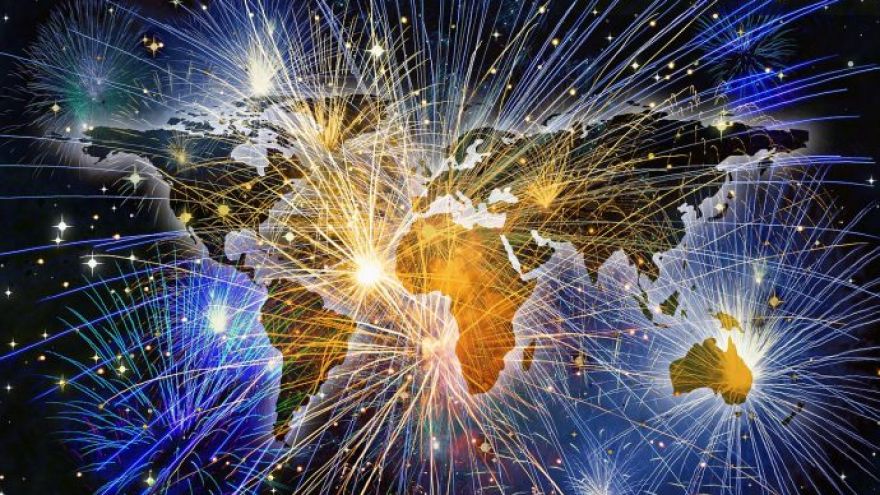
When getting ready to celebrate New Year’s on January 1, we should realize that this is a relatively new tradition. The first New Year’s celebration ever recorded was in Mesopotamia, modern-day Iraq, about 2,000 B.C. But then the ceremony was held in mid-March at the time of the spring equinox. Other early civilizations such as the Persians, Phoenicians, and Egyptians used the fall equinox as the start of their New Year. These New Years reflected more the phases of the moon and stars and the growing seasons rather than any organized calendar.
Things all changed with the Romans. At the beginning of the Roman civilization, there were only ten months in the year, and what we consider March 1 was the beginning of the New Year. The names of he months still reflect that, for instance, September is based on the Latin word for seven, ‘septem’, October comes from ‘octo’ for eight, and so on. Around 700 B.C. the two extra months of January and February were added to the calendar. This created an administrative year for governing the growing empire. It was not until Julius Caesar brought in the Julian Calendar in 46 B.C. that January 1 became the official start of the New Year.
However, the growth of Christianity in Medieval Europe saw January 1 no longer celebrated as New Year because of its pagan overtones. Depending upon the country New Year could be observed on Christmas Day, March 1, the Feast of the Annunciation on March 25, or even Easter. The adoption of the Gregorian calendar in 1582 meant most Catholic countries reverted to January 1 as New Year’s Day, Protestant countries took longer to adopt the revised date. For instance, Britain and its empire and colonies in America didn’t celebrate New Year’s on January 1 until 1752.
Scotland
New Year is a big deal in Scotland, more so than probably any other holiday celebration throughout the year. The Scots even have their word for it – Hogmanay. All across Scotland on New Year’s Eve, moments before the hour strikes midnight, dark-haired men are ushered out of their homes so they can become the first to cross the threshold in the New Year. This ‘first footing’ as it’s called is meant to bring good luck to the house and those that live there. Traditionally a ‘first footer’ must bring gifts of coal to keep the house warm, a coin for wealth, bread for food, salt for flavor, and evergreen for long life, and some whiskey for good cheer.
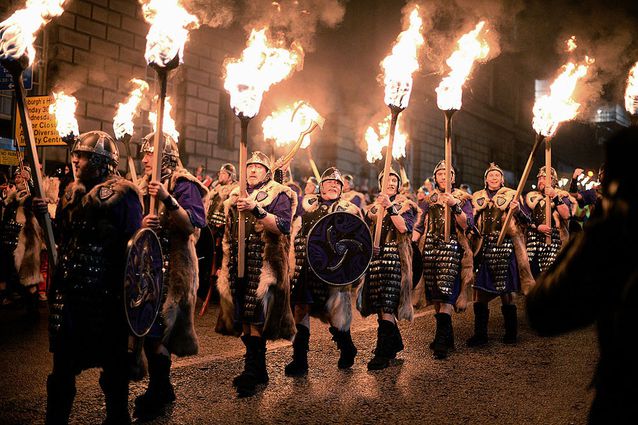
In the town of Stonehaven, people take New Year’s very seriously and parade wielding huge fireballs on the end of chains. The fire festival has been taking place in the town for over a hundred years, although many suggest the origins go back to pagan times. The men who swing the fireballs of burning pitch have trained for years to perfect the art of turning it around their heads and bodies without getting burned. They parade through the town in the run-up to the New Year, and as the clock chimes midnight, they throw the burning spheres into the sea. The pre-Chrisitan origins suggest the ceremony symbolizes the purification of the earth and the warding off of evil spirits at the winter solstice.
Russia
For most of the last century, Christmas was banned in Soviet Russia, and the festivals surrounding the New Year became the main focus of winter celebrations. Today, New Year has a great significance in modern Russia, and with the return of Russian Orthodoxy, Christmas has returned but using the old calendar which puts Christmas Day on January 6. Hence most Russians have a week’s holiday between New Year and Russian Orthodox Christmas.
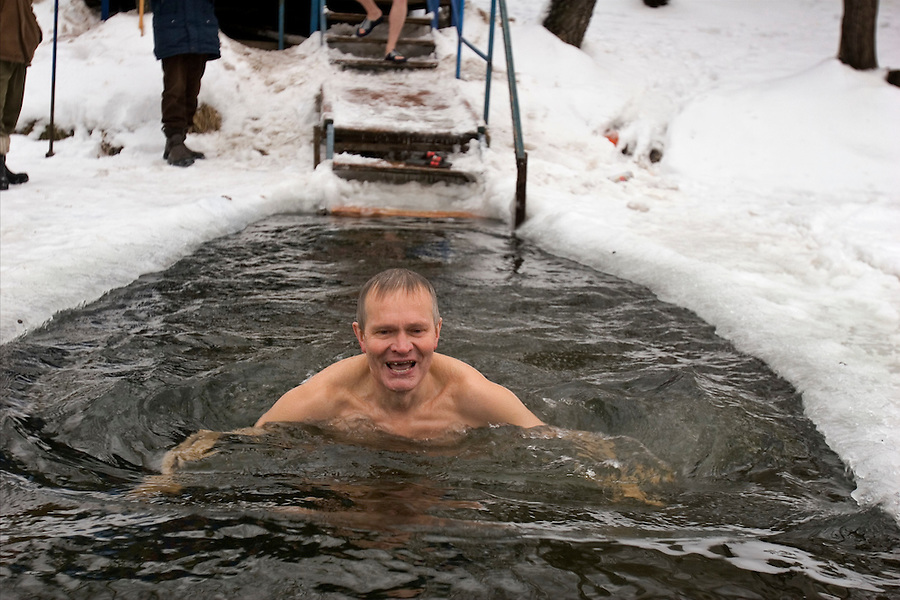
In the frozen lakes of Siberia, divers plant trees underwater as a symbol of starting over and rebirth. Elsewhere Russians often take a plunge into the freezing water of lakes as a way to rejuvenate themselves for the year to come.
Spain
As the clock strikes midnight to welcome in the New Year, Spaniards stuff their mouths with 12 grapes, one a second, to represent the coming twelve months. Eating the twelve grapes are meant to give the person good luck for the New Year.

However, if they don’t manage to stuff themselves in time, then it is considered bad luck.
Brazil
White is the predominant color for people in Brazil on New Year’s Eve. Many locals wear white and throw white flowers into the ocean as an offering to Iemanja, the Goddess of the Sea. The ritual has roots in the tribal past of the country before Christianity was brought with the explorers from Portugal and the old world.

The offerings are meant to bring prosperity for the coming year and appease the Goddess so she will bestow blessings on mothers and their children.
China
In China, New Year is the time for painting your door red as the color is meant to bring you good luck in the coming 12 months. Red is considered the luckiest and happiest color in China and is seen in all kinds of celebrations including weddings and birthdays.
Of course, Chinese New Year works off the lunar cycle and corresponds to the middle of February, not January 1, in other parts of the world.
Denmark
Danes have a smashing time at New Year getting rid of their unwanted crockery. Broken glass and china are meant to bring good luck to people in Denmark.

At the New Year celebrations, Danes go from house to house breaking chipped and unwanted plates on the doorsteps of their friends and family to bring them good luck in the coming year. The bigger the pile of broken china on your doorstep the more popular you are.
Italy
Italians have a reputation of being hot-blooded lovers, so it’s no surprise that the people think that if you are going to be lucky in love during the next year, you have to wear red underwear to see in the New Year. Red is regarded as the color of fertility and love, and young people will usually wear red undergarments when they go out to party on New Year’s Eve.
Argentina
Underwear also plays a part in the New Year rituals in Argentina. The South Americans prefer to wear pink undergarments on New Year’s Eve to bring good luck in love during the coming twelve months. It’s a sure sign to anyone who gets to see that you’re looking for love.
Colombia, Panama & Ecuador
Staying in South America, people in Colombia, Panama and Ecuador make dummies and scarecrows for their New Year’s celebrations and set them on fire as a way of cleansing themselves of any bad luck behind.

The dummies are made as effigies of people they don’t like or who have died during the previous year. That means when they are burned, any bad energy is left in the past.
Chile
For families in the Talca region of Chile New Year’s Eve is more like Halloween. It is on this night that they gather in the region’s cemeteries to welcome in the New Year with those who have died. The rituals and celebrations that surround the events are similar to the Day of the Dead festival in Mexico.
Japan
The whole of Japan echoes to the sound of bells being rung 108 times at midnight on New Year. The traditional Joya no Kane ceremony is part of the Buddhist belief and represents all of the worldly sins and desires proscribed in the religion. Tolling the bells found in Buddhist temples are meant to bring luck for the coming year.
South Africa
In most places in the world New Years is seen as a chance to throw out the old as the year turns, and in South Africa, they take it literally. A tradition has grown up where old furniture would be hurled out of windows on the pavement below as the New Year begins to represent a fresh start and the casting out of past problems. People would stockpile old couches, refrigerators and beds leading up to New Year’s Eve.

The practice has been condemned as being too dangerous, with furniture being thrown out of high buildings, and it is not as common as it once was.
Greece
An ancient tradition on the Greek island of Crete sees a bunch of onions hanging from the front door in time for New Year. The islanders use a particular type of onion called squill or sea onion. It’s a poisonous plant and grows in Crete. The onion is different in that it can continue to grow even when it’s taken out of the ground.

The people of Crete believe that the plant’s undoubted resilience would rub off on the home where they are hanging and bring good luck to the place. On the morning of New Year’s Day parents hit their children with the onions to wake them for church.
Turkey, Armenia, & Greece
All three of these countries have a similar tradition surrounding New Years Day. In Turkey, families open up a pomegranate to open them up to wealth and prosperity during the coming twelve months. While in Armenia and Greece, the pomegranates are thrown on the ground in front of the house for good luck. The more seeds, pieces and juice spread on the ground; the more luck will be brought to the home and the family that lives there. The tradition supposedly comes from the pomegranates resemblance in color and shape to a human heart and is symbolic of health, fertility, and life.
Romania
Getting dressed up for a party on New Year’s Eve is pretty standard these days, but in Romania, people dress up as bears so they can dance around. It’s believed to have started as a pagan ritual to ward off evil spirits but is now part of Romanian culture.
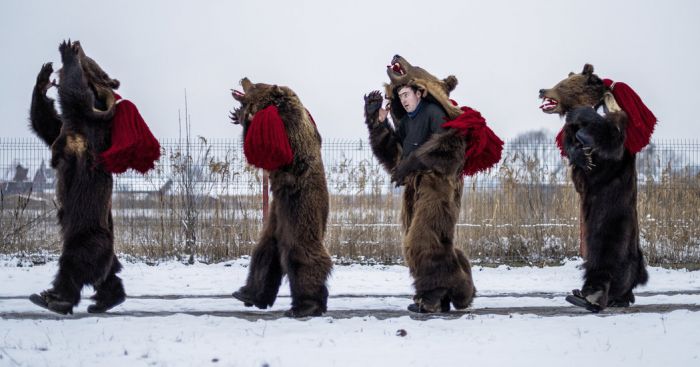
Dancers dress up to look like bears that are native to the Romanian forests, and others dress like the gypsies that chain them so they can perform the ‘dance of the bear’. The dance represents the coming of a New Year and the death of the old one.
Germany
In Germany, New Year’s celebrations center around food, in particular, ‘krapfen’ or filled doughnuts. The German doughnut, which is called krapfen, Krebbel, Kreppel, or sometimes Berliner, is one of the most important parts of the ‘Silvester’ or New Year’s Eve rituals. The doughnuts are traditionally only eaten on special occasions, as in years gone by they used to be expensive treats. The doughnuts are filled with a chocolate or jam filling covered in icing sugar. As a prank sometimes they are filled with mustard.
Estonia
An even more strange food celebration of New Year comes from Estonia. The numbers seven, nine and twelve are considered lucky in the country. So people try to eat that many meals during New Year’s Eve stuffing themselves with all the food they can manage.
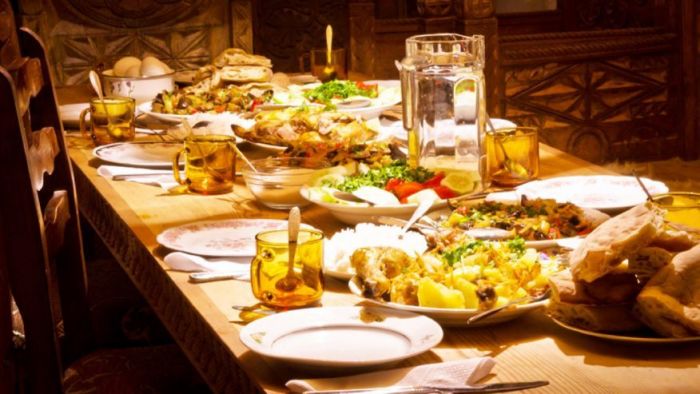
If a man or a woman can feast that many times on New Year’s Eve they are thought to have prosperity and strength of seven, nine or twelve people for the rest of the year. In more health-conscious times, the number of courses in the meal count, rather than the number of meals themselves.
Philippines
New Year in the Philippines is a time for thinking about wealth and cash and bringing luck to the coming year. So when giving gifts at this time of year Filipinos make sure their presents are always round, so they represent coins and hence wealth. Whatever the gift it must be round no other shape will do.
Peru
New Year is a time for getting your own back in the small village of Takanakuy which hosts a festival. This is a time where you can have a fist fight to settle your differences, and the police won’t intervene. The idea is to wipe the slate clean for the New Year, nursing a few bruises along the way.
Puerto Rico
If you’re in Puerto Rico for New Year’s Eve, you better keep your eyes skywards as a bucket of water might end up falling on your head.

In some parts of the country, people throw pails of water out of their windows to welcome in the New Year as a way of driving off evil spirits.
Ireland
The ancient pagan past of Ireland comes out at New Year when people throw bread at the walls of their room to banish evil spirits.
Finland
To get an insight into the coming year, Finnish metal workers cast molten tin into a bucket of water. The resulting shape is then examined and interpreted to predict the future.
Pin for later

